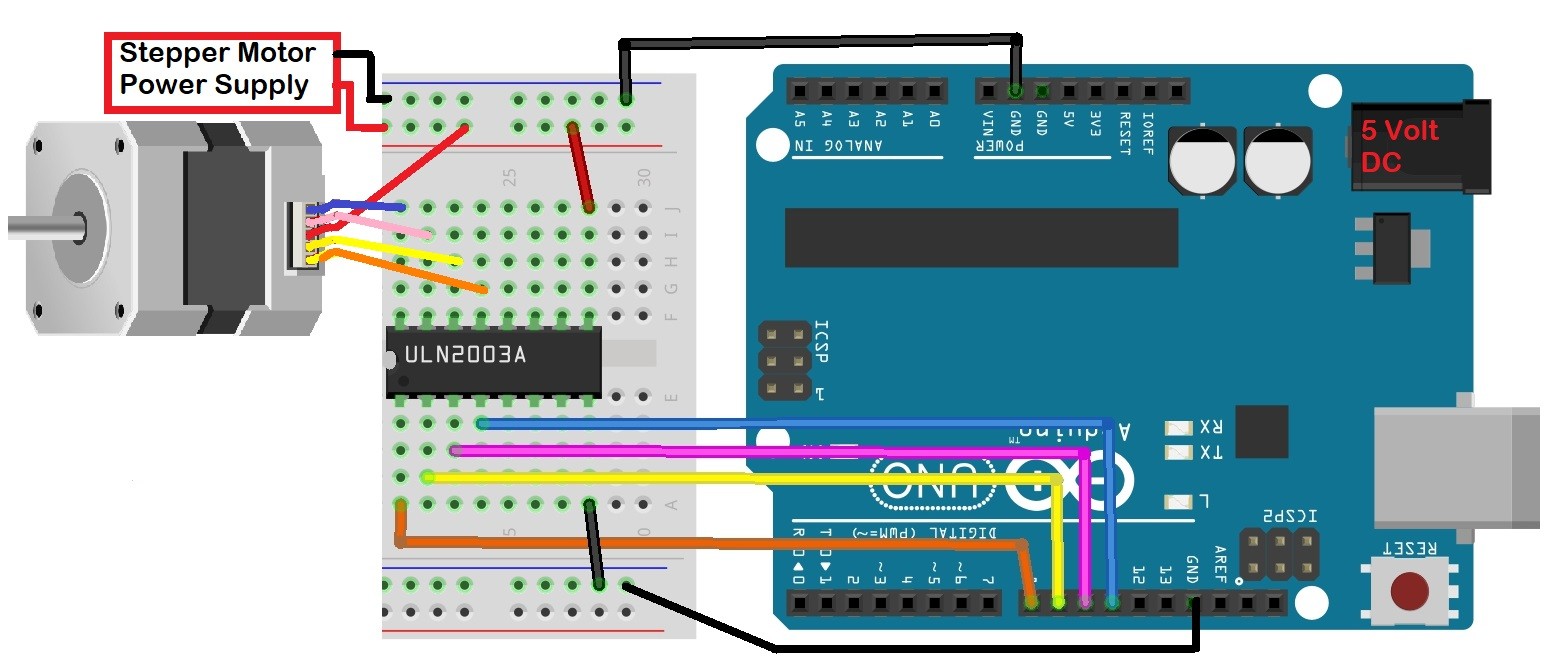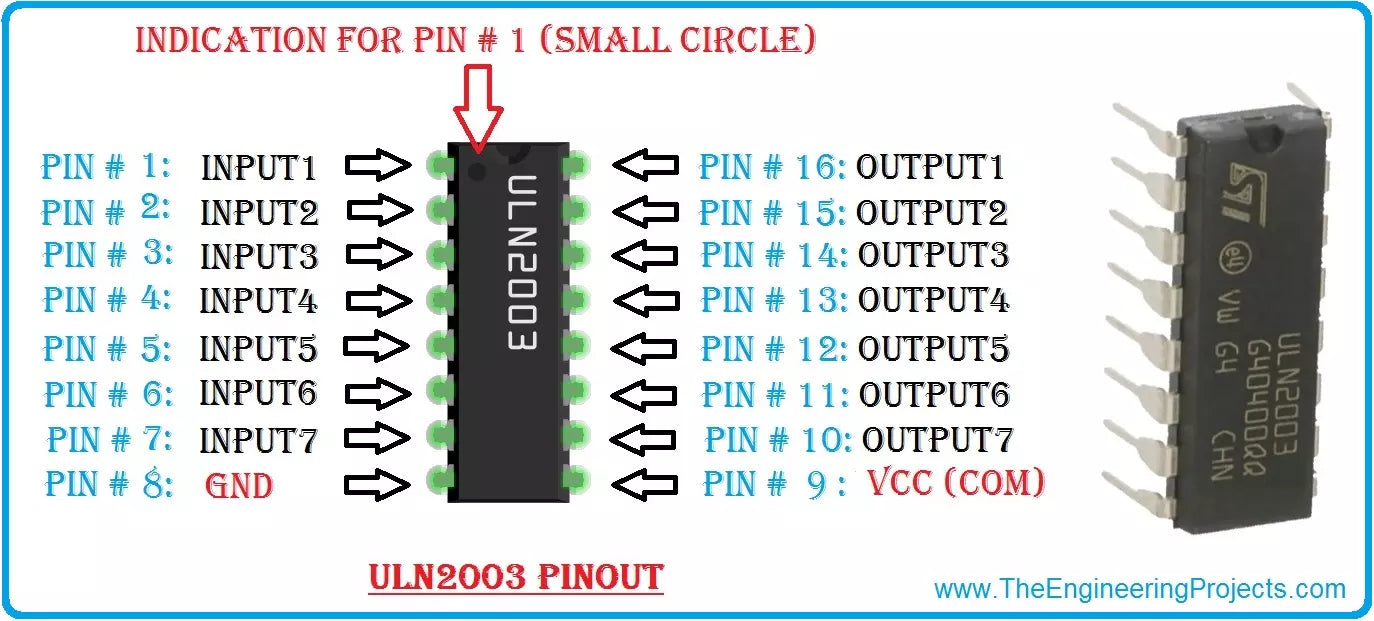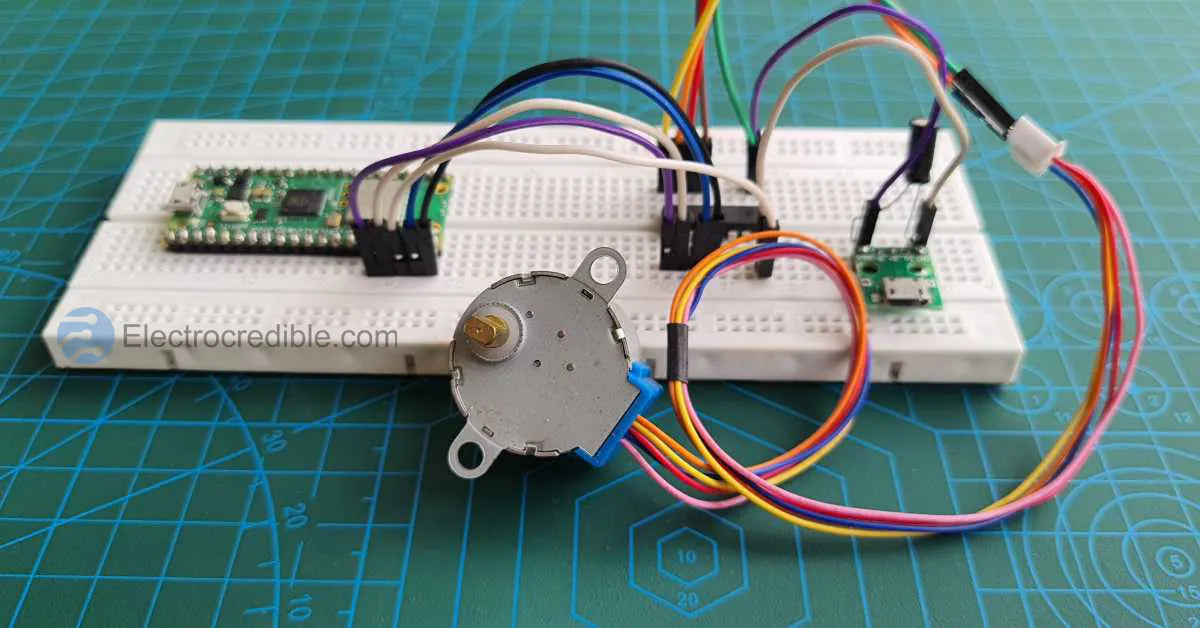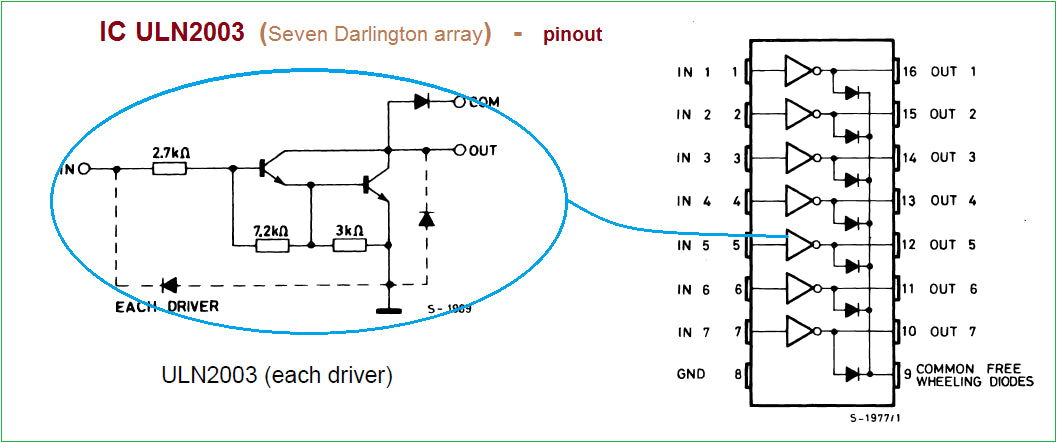Introduction

Ever heard of the ULN2003 Integrated Circuit (IC)? It's a tiny beast that doesn't always get the recognition it deserves in the vast electronics universe. This little wonder, however, plays a massive role in a multitude of applications, especially when you're wrangling high-current loads with digital logic circuits like op-amps, timers, gates, and the famous Arduino, PIC, and ARM microcontrollers. In this all-encompassing product review, we're about to dig deep into the guts of the ULN2003, peeling back its layers to reveal what makes it tick, how it fits into your projects, its performance secrets, and a whole lot more. Brace yourselves for a journey that will leave you convinced that the ULN2003 should be a staple in your electronics arsenal.
Section 1: Deciphering the ULN2003 IC

The ULN2003 IC, designed to make high-current loads dance to your digital tune, is the unsung hero of electronic aficionados and tech geeks. To truly fathom its essence, let's break it down, shall we? This IC boasts seven darlingtons lined up in a common collector configuration. What's that mean? Well, it's like a switchboard operator for heavy currents. And, it's got diodes onboard to protect against the dark arts of back electromotive force (EMF) caused by unruly inductive loads. All this wizardry makes the ULN2003 an electronics rock star. So, now that you've got a glimpse of its insides, let's explore its headline features and specifications. Prepare to be impressed!
The ULN2003 doesn't play games when it comes to features. It can handle voltage levels up to 50V, and its current-sinking prowess ranges from 500mA to a solid 1.5A per channel. This means it can flex its muscles with motors, solenoids, and relays, becoming an irreplaceable sidekick in countless applications. But here's the kicker – it's buddies with a wide range of microcontrollers and digital logic circuits, which makes it incredibly versatile.
Section 2: ULN2003 in Action

The ULN2003 doesn't like to sit on the bench; it craves the spotlight in various applications. Picture this: you're knee-deep in an Arduino project, and there's this motor that's screaming for 9V and 300mA to get grooving. Trying to feed it juice directly from an Arduino I/O pin? Nah, that's a recipe for heartbreak. Enter the ULN2003, your knight in shining silicon armor. It steps in to provide the current and voltage your motor craves, making it a VIP in the world of robotics, automation, and all things IoT.
But wait, there's more! The ULN2003 isn't content with just playing around with hobbyist projects. It's got a day job too. In the world of industrial automation, it's like the trusty wrench in a mechanic's toolbox. It's there to control solenoid valves, relays, and hefty stepper motors, ensuring precision and reliability in high-stakes operations. Oh, and it's not just hardware—it's quite the digital diva too. Logic gates, timers, op-amp circuits – you name it, the ULN2003 can handle the current load, ensuring smooth operation in demanding scenarios.
Section 3: Peeking at Performance and Trustworthiness

When the curtains rise on performance, the ULN2003 seldom falters. Users from all walks of electronics life have sung its praises for effortlessly wrangling high-current loads. Its efficiency and reliability shine through in the world of robotics, where every move counts. And here's the kicker: those protective diodes it's packing? They're like the bodyguards of electronics, shielding sensitive components from the wrath of back EMF and keeping the show running smoothly, even when inductive loads throw their tantrums.
But remember, no superhero is without its kryptonite. While the ULN2003 can sink current like a champ, it's not a great source of current. So, you need to choose your battles wisely. Also, when you're pushing the boundaries of its voltage and current ratings, things can get a tad toasty. So, have a plan in place for heat management. It's all part of the game.
Section 4: Wrestling with Setup and Wiring

Getting the ULN2003 all dressed up for your project is like preparing for a cosmic voyage—seemingly complex but achievable. First things first, you need to acquaint yourself with the ULN2003's pinout and wiring mojo. Check out the datasheet – it's your treasure map. Connecting this IC to your microcontroller or digital logic circuit is the main event. Make sure your input signals are on point, and your power supply is in harmony with your load's demands. Got it? Great!
Here's the twist in the plot: troubleshooting. Sometimes, the motor or load doesn't follow the script. In such cases, you're Sherlock Holmes, deciphering the wiring, verifying the power supply's credentials, and making sure your input signals are hitting the mark. Also, keep an eye on the IC's temperature during its grand performance. If it's getting hot under the collar, consider some cool strategies like heat sinks to keep things chilled.
Section 5: Pros and Cons: Balancing Act

The ULN2003 has a treasure trove of pros that make it a darling of the electronics world. Its knack for handling high-voltage, high-current loads and its shield against back EMF are like secret weapons in your arsenal. Plus, it plays nice with a variety of microcontrollers and digital logic circuits, giving you the freedom to integrate it with ease. And let's not forget the price tag—it's budget-friendly, making it a budget-savvy choice for a whole range of projects.
But there's always a flip side, right? The ULN2003, with all its glory, isn't a great source of current. It's mainly designed for current sinking. Plus, when you're dancing on the edge of its voltage and current limits, heat becomes the party pooper. So, make sure you're aware of these pros and cons when you're considering the ULN2003 for your next project.
Section 6: Price and Whereabouts

The ULN2003 doesn't just dazzle with its features; it also offers a wallet-friendly experience. It's a budget-friendly superstar, especially when you put it up against alternative motor driver solutions. And the good news is, it's not playing hide-and-seek. You can find it at most electronics haunts, both online and in the physical realm. Its popularity ensures that you won't need a treasure map to get your hands on it, making it super convenient for your project needs.
Section 7: Time to Wrap It Up
In conclusion, the ULN2003 Integrated Circuit is like the unsung hero of the electronics world, stepping up to the plate when high-current loads need a guiding hand. Whether you're a novice or a seasoned engineer, its versatility, cost-effectiveness, and widespread availability make it an essential tool in your electronics toolbox.
When used in the right context, the ULN2003 simplifies complex motor control scenarios, enhancing the performance of your projects. But remember, it's not all rainbows and unicorns. To harness its power, you need to understand its strengths and limitations and use it wisely in your designs.
So, whether you're building robots, diving into automation, exploring the realms of IoT, or tinkering with digital logic circuits, the ULN2003 proves itself as a reliable motor driver IC, ready to take your electronics projects to the next level.
Section 8: Product
If you are looking for an integrated board where the ULN2003A is used you can always have a look at the stepper motor with the driver board!
Product Review :ULN2003A